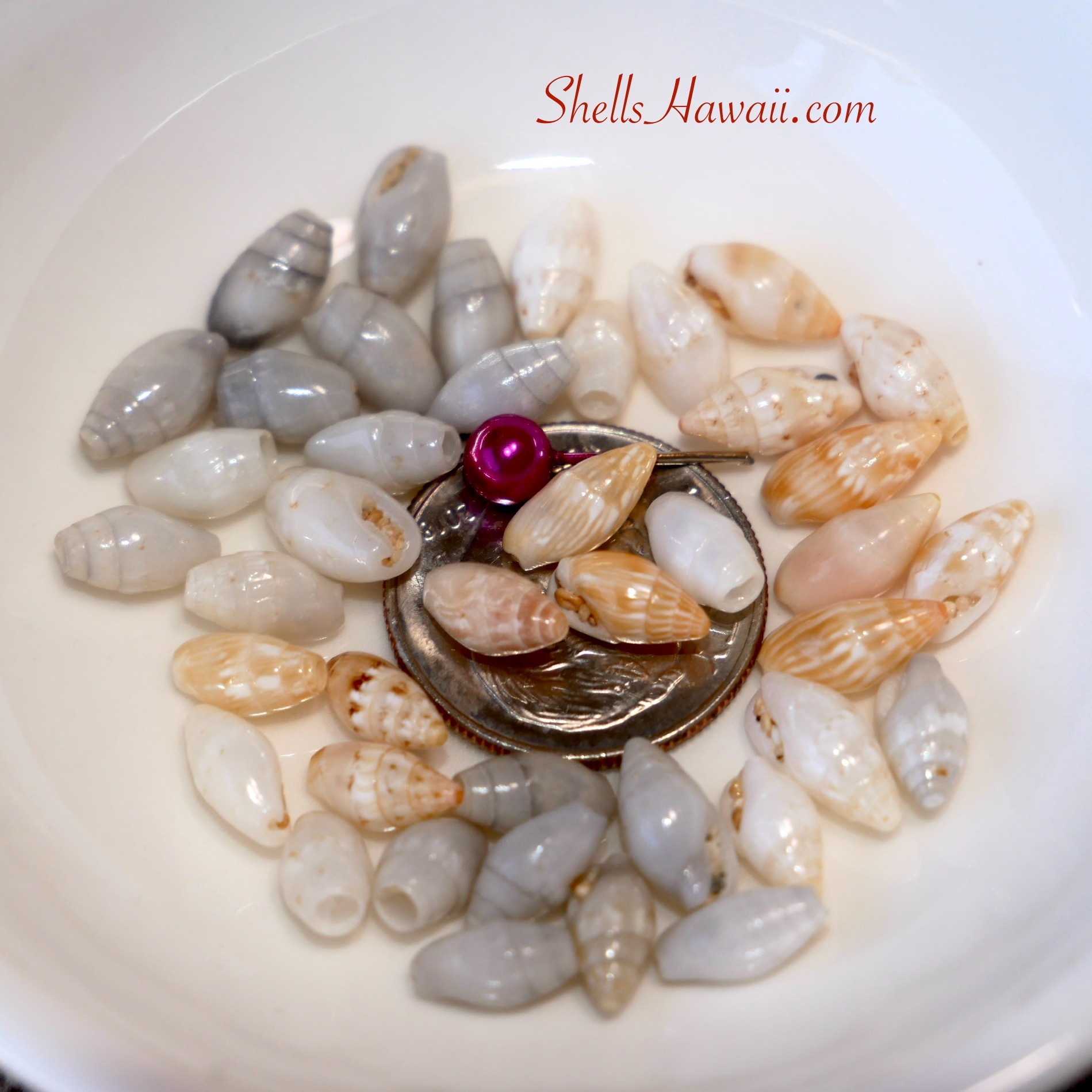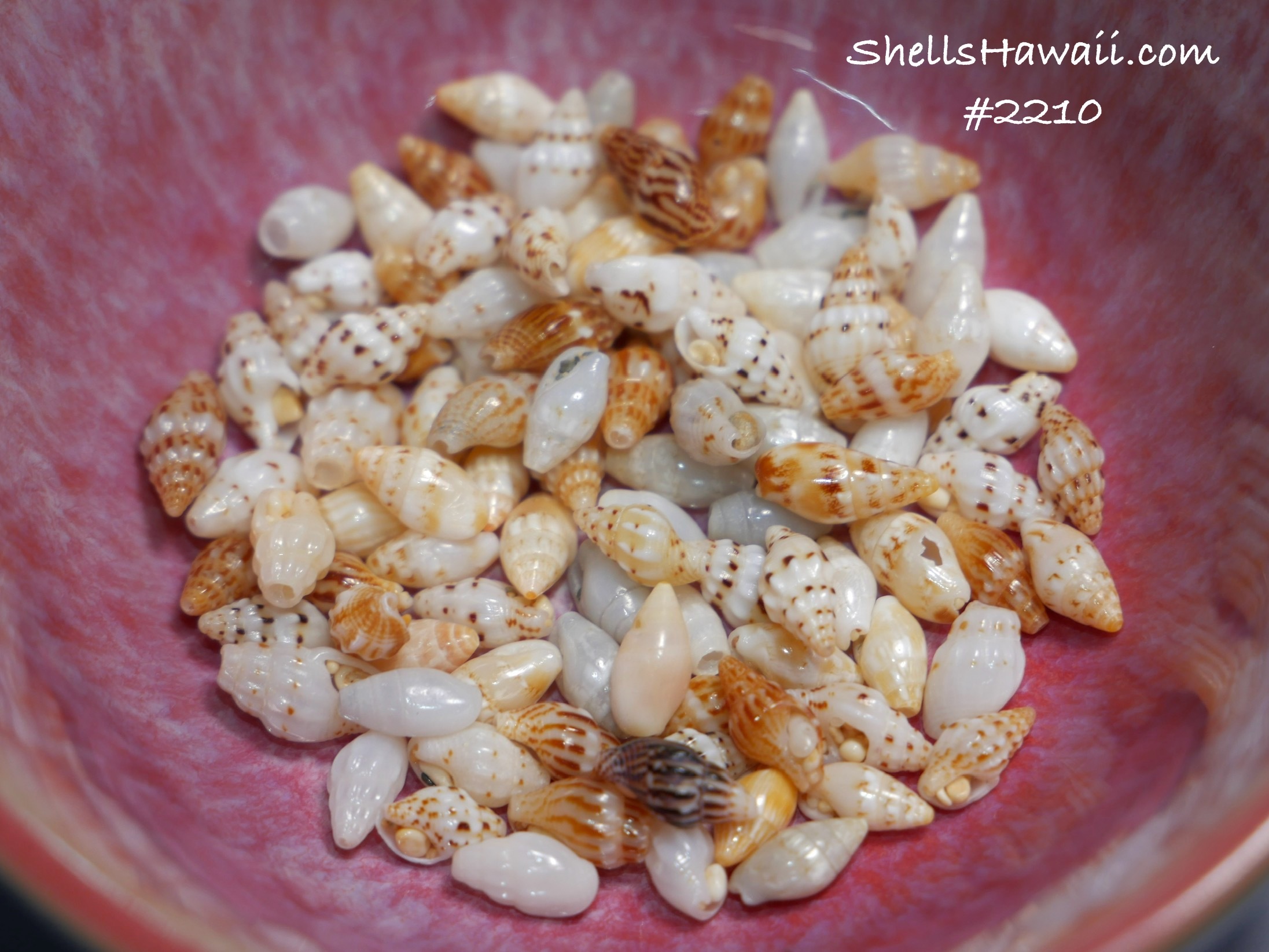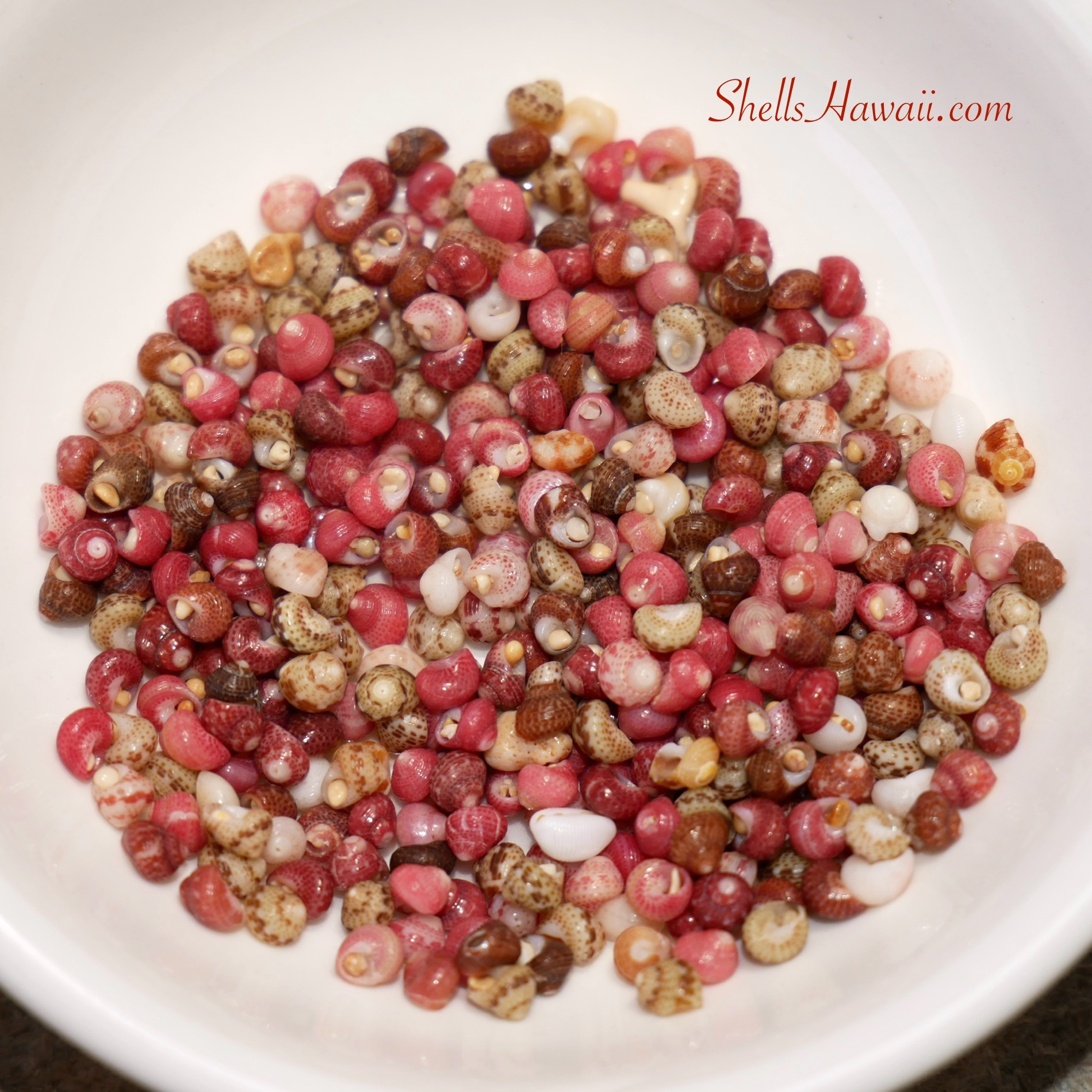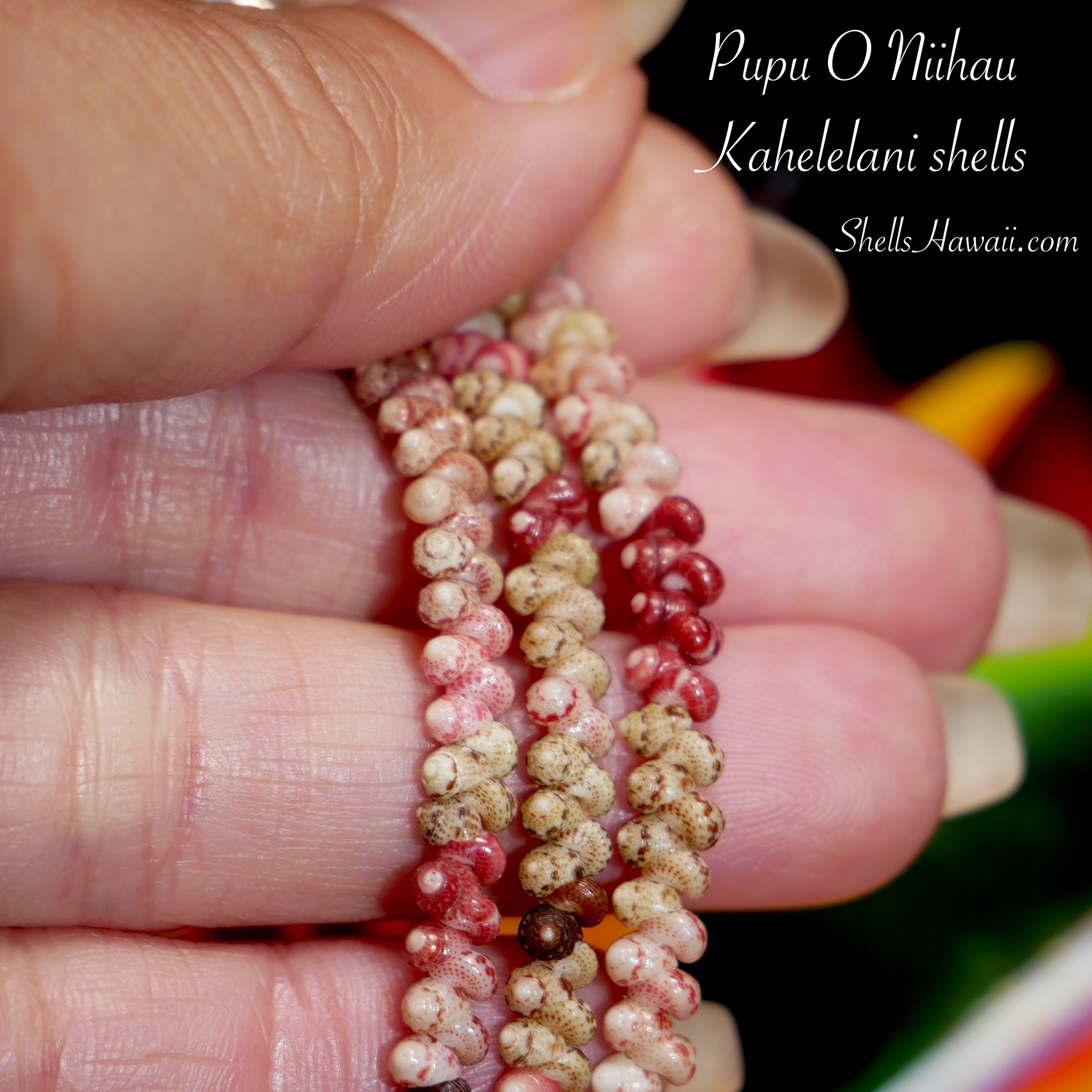If you’ve ever picked up a tiny shell and found yourself wondering, “Is this really from Niʻihau?” — you’re definitely not alone. It’s one of the most common questions people ask when searching for authentic Niʻihau shell jewelry (ニイハウ シェル ジュエリー) or trying to learn how to tell if Niʻihau shells are real. I truly understand the curiosity — these tiny treasures are more than just shells; they’re part of Hawaiian culture and artistry.
Over the years, I’ve learned that identifying real Niʻihau shells isn’t always easy. There’s no little stamp that says “Niʻihau,” but there are clues — color, luster, texture, and a story behind every piece of authentic Hawaiian shell jewelry. Let’s look closer together. ✨
Shell Types Used in Niʻihau Shell Jewelry
Niʻihau is famous for Kahelelani, Momi, and Laiki shells — the true stars of authentic Niʻihau shell jewelry.
You can sometimes find these shells on other Hawaiian islands too, but the ones from Niʻihau usually stand out. They often show a richer variety of colors, and the luster seems to jump right out at you — glowing even under soft light. Each shell feels alive, with deeper tones and natural shine that you rarely see in shells collected elsewhere. There’s just that special “something” about them — a beauty that collectors and Hawaiian jewelry (ハワイアンジュエリー) lovers fall in love with right away.
➡️ Related reading: What Are Kahelelani Shells?


✨ If you’d like to see how Kahelelani shells are used in real jewelry, take a look at these designs:
-
Kahelelani Shell Bracelet – Herringbone Style with Cone Shell Centerpiece #359
-
Niʻihau Shell Lei – Four-Strand Kipona Style with Rare Sunrise Shell #1053
➡️ Related reading: What Are Momi Shells?


✨ If you’d like to see how Momi shells are used in real Hawaiian jewelry, take a look at these designs:
-
2 3/4" Pūpū O Niʻihau Ombre Momi, Kahelelani & Tahitian Pearl Earrings #2625
-
21" Momi & Kahelelani Shell Lei – Kipona Style with Rare Multicolor Shells #921
➡️ Related reading: What Are Laiki Shells Used for in Niʻihau Jewelry?


✨ Featured designs using Laiki shells:
These varieties are what most people look for when learning how to tell if Niʻihau shells are real or exploring Niʻihau shell identification guides to understand their subtle beauty.
The Colorful Shades of Shells — Like a Hawaiian Rainbow After the Rain
One of the most magical things about Niʻihau shells is their incredible variety of colors — from soft pearl whites and golden Momi, to pink, red, burgundy Kahelelani, deep green, and even jet black.
It feels like walking past rows of leis at a Hawaiian craft fair, each strand showing off its own little rainbow. Every shell carries its own natural shade, and together they become a tapestry of colors you can’t help but admire.
Shells from other islands can sometimes look a bit sun-faded or pale because the sand, currents, and sunlight are different. But when a Niʻihau shell catches the light just right… ✨ you’ll see it sparkle in a way that’s unforgettable.
➡️ Related reading: The Vibrance of Life — How Kahelelani Shell Colors Are Formed
➡️ Related reading: What Are Hawaiian Puka Shells?
For collectors searching for authentic Hawaiian shell jewelry or real Niʻihau shell jewelry for sale, these color differences can be the first clue of origin.
Side-by-side comparison of Kahelelani shells from Niʻihau and Kauaʻi.


Shell Quality — What to Look For to Identify If Shells Are Truly from Niʻihau
Another thing that makes Niʻihau shells (ニイハウ シェル) so special is their natural shine. They often look polished, but that glow is all from nature — nothing artificial. Even the sand that sometimes gets caught in the shell’s mouth sparkles softly, showing how strong the luster is on those tiny surfaces.
Niʻihau shells usually have fewer pits or chalky spots than shells found on rougher beaches — and that’s where the sand makes a difference. On many Niʻihau beaches, the sand is incredibly fine, almost silky, helping the shells stay smooth and glossy. Even the sand itself glimmers with luster.
When you look closely, each authentic Niʻihau shell carries clues to its origin. These small details can help you tell whether a shell truly comes from Niʻihau:
-
Luster: Real Niʻihau shells glow with a deep, natural radiance — not glossy like polish, but smooth and full of life.
-
Texture: The surface feels strong and smooth, never thin or brittle. The shell should feel well-formed, not fragile.
-
Color: Authentic Niʻihau shells show natural depth and warmth in their color — from soft whites and golden yellows to pinks, greens, and rich burgundy tones. They rarely appear dull or faded.
-
Shape & Consistency: For lei and Hawaiian jewelry (ハワイアンジュエリー), shells are chosen for uniformity and harmony. Even when designs use gradual size changes, Niʻihau shells tend to align beautifully.
-
Inside of the Shell: A true Niʻihau shell often has a glossy, smooth interior when seen under light. Even sand caught inside may shimmer slightly — a small but distinct sign of the island’s silky beaches. Shells from other islands often show darker, rougher interiors and coarse, matte sand.
Side-by-side comparison of finished jewelry made with Kahelelani shells from Niʻihau and Kauaʻi.


➡️ Related reading: How to Choose Quality Niʻihau Shells – Beginner’s Guide
➡️ Related reading:
How to Choose Quality Niʻihau Shells – Beginner’s Guide (Part 2: A-Grade Shells)
Beginner’s Guide (Part 3: B & C-Grade Kahelelani Shells)
These traits are what experienced Hawaiian shell jewelry buyers look for when studying Niʻihau shell authenticity tips or comparing the difference between Niʻihau and Kauaʻi shells.
Proof Matters
In Hawaiʻi, the law says you can only call something “Niʻihau shell jewelry” if 100% of the shells were gathered from Niʻihau or its small offshore islets.
But over the years, the phrase Niʻihau shell jewelry (ニイハウ シェル ジュエリー) has been used more loosely to describe Hawaiian shell jewelry (ハワイアンジュエリー) made with the same types of shells. Technically, that’s not correct by Hawaiian law — but I can see why people say it.
Many people first learn about Hawaiian shell jewelry by hearing the term “Niʻihau shells.” Even though this art has been known and practiced for generations, the Hawaiian language can be difficult for many to pronounce or remember. So when customers ask, “Are these Niʻihau shells?” it’s easier for sellers to simply say yes — even if the shells were actually gathered on Kauaʻi or another island. It’s not meant to deceive; it’s just the name most people recognize and associate with these beautiful, tiny shells.
➡️ Related reading: Why Are Niʻihau Shells So Rare and Expensive?
Understanding Niʻihau shell authenticity laws can help anyone searching for real Hawaiian seashell jewelry or buying Hawaiian shell necklace online feel more confident in what they purchase.
Are These Niʻihau Shells? The Famous Question!
Let’s imagine you’re visiting one of the Hawaiian Islands, and on your list of things to do is a stop at a local farmers market or Hawaiian craft fair — one of the most famous and memorable experiences for visitors. You’ll find handmade treasures everywhere: wood carvings, lauhala baskets, tropical fruits, and local foods that fill the air with sweet scents.
And then, as you walk a little further, you notice a table that sparkles with color — jewelry made from the tiniest, most vibrant shells. It looks just like my booth at the island craft fairs I used to attend (one of my absolute favorites, and something I truly miss dearly).
You stop to look more closely. Every strand and pair of earrings seems to shine with light. You may not know the Hawaiian shell names yet, or exactly what to ask, so you smile and ask the question I hear almost every time:
“Are these Niʻihau shells?”
It always makes me smile, because I know it’s coming. And my answer is always honest:
“They are the same type of shells used in Niʻihau shell jewelry, but because they weren’t collected from the beaches of Niʻihau, you can’t call them Niʻihau shell jewelry.”
The reaction is usually the same — a polite “ahhh…” followed by a quiet pause, like they’re not quite sure what to think. And I completely understand that feeling. If you’re hearing it for the first time, it can be a little confusing!

If you ask me this question, I’ll always take the time to explain — where the shells come from, how each island shapes them differently, and why it matters. But what I’ve often heard from my customers is that not every seller takes that extra step. Some may simply say “yes,” and that’s it. It’s not always meant to mislead; it’s just the easiest way to answer a complicated question.
✨ So here’s a small but important tip: if you truly want to know, don’t ask “Are these Niʻihau shells?” Instead, ask —
➡️ “Were these shells collected from the beaches of Niʻihau?” ⬅️
That small change in wording makes all the difference. It opens the door to a truthful answer — and usually to a much clearer, more honest conversation.
✨ Sometimes, I even ask back gently:
“Do you prefer jewelry made only with shells collected from Niʻihau beaches? Or would you be just as happy with shells from Kauaʻi or other islands? They’re the same type of shells — the same species — the only difference is where they were collected.”
Most of the time, though, this just adds to the confusion — and that’s why many sellers simply say, “Yes, these are Niʻihau shells.” It’s easier, it’s what people recognize, and it avoids the long explanation. But I believe sharing the truth, even in simple words, helps people appreciate the beauty and origin of every shell more deeply.
➡️ Related reading: Where Do You Get Your Niʻihau Shells?
Many Hawaiian shell jewelry buyers ask this same question when learning how to tell if Niʻihau shells are real, and that curiosity is such a beautiful first step into Hawaiian culture and the story behind each shell.
After All We’ve Learned About Niʻihau Shells
Even with all these tips, it can still be tricky to tell where shells come from. After years of collecting and creating authentic Niʻihau shell jewelry (ニイハウ シェル ジュエリー), I’ve learned that the difference often shows itself not just in how a shell looks — but in how it feels. It’s something that comes only with time, patience, and countless hours of sorting tiny treasures under a bright lamp.
If you truly want Niʻihau shells, the best way is always to buy from someone you trust.
I’ve been blessed to learn from, and purchase shells through, very respected gatherers — people who know Niʻihau’s waters and beaches better than I ever could. Many of them also create Niʻihau shell jewelry (ニイハウ シェル ジュエリー) themselves, and most are true masters of the craft.
Kahelelani poepoe style shell earrings — a comparison of shells from Niʻihau vs. Kauai


I can promise you this:
I will never advertise shells or jewelry as Niʻihau if they were collected from another island. Every shell I use is described truthfully, and every piece of authentic Hawaiian jewelry (ハワイアンジュエリー) I create honors its island of origin.
All shells deserve to be celebrated for where they come from — and I want my customers to always feel confident, knowing exactly where their shells were gathered and being able to share that story with pride whenever they wear their jewelry.
Each shell I use comes from trusted connections, and I’m deeply grateful for the relationships that make it possible to share these treasures with you.
In the end, it’s not just about spotting the difference — it’s about respecting the craft, the culture, and the people who keep this tradition alive.
And maybe, just maybe, smiling at the famous question along the way. ❤️
— Janjira
 JPY
JPY

